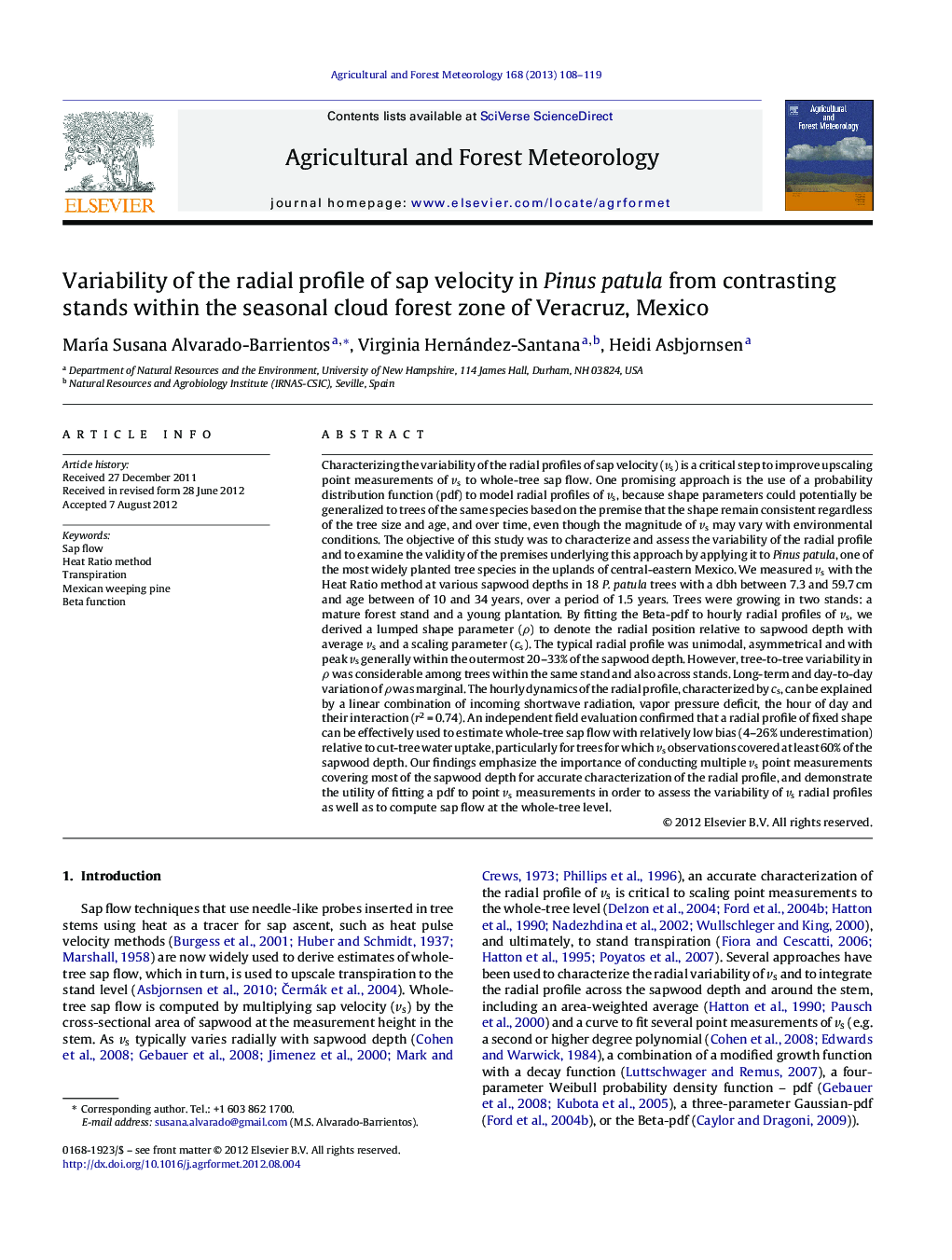| کد مقاله | کد نشریه | سال انتشار | مقاله انگلیسی | نسخه تمام متن |
|---|---|---|---|---|
| 81933 | 158362 | 2013 | 12 صفحه PDF | دانلود رایگان |

Characterizing the variability of the radial profiles of sap velocity (vs) is a critical step to improve upscaling point measurements of vs to whole-tree sap flow. One promising approach is the use of a probability distribution function (pdf) to model radial profiles of vs, because shape parameters could potentially be generalized to trees of the same species based on the premise that the shape remain consistent regardless of the tree size and age, and over time, even though the magnitude of vs may vary with environmental conditions. The objective of this study was to characterize and assess the variability of the radial profile and to examine the validity of the premises underlying this approach by applying it to Pinus patula, one of the most widely planted tree species in the uplands of central-eastern Mexico. We measured vs with the Heat Ratio method at various sapwood depths in 18 P. patula trees with a dbh between 7.3 and 59.7 cm and age between of 10 and 34 years, over a period of 1.5 years. Trees were growing in two stands: a mature forest stand and a young plantation. By fitting the Beta-pdf to hourly radial profiles of vs, we derived a lumped shape parameter (ρ) to denote the radial position relative to sapwood depth with average vs and a scaling parameter (cs). The typical radial profile was unimodal, asymmetrical and with peak vs generally within the outermost 20–33% of the sapwood depth. However, tree-to-tree variability in ρ was considerable among trees within the same stand and also across stands. Long-term and day-to-day variation of ρ was marginal. The hourly dynamics of the radial profile, characterized by cs, can be explained by a linear combination of incoming shortwave radiation, vapor pressure deficit, the hour of day and their interaction (r2 = 0.74). An independent field evaluation confirmed that a radial profile of fixed shape can be effectively used to estimate whole-tree sap flow with relatively low bias (4–26% underestimation) relative to cut-tree water uptake, particularly for trees for which vs observations covered at least 60% of the sapwood depth. Our findings emphasize the importance of conducting multiple vs point measurements covering most of the sapwood depth for accurate characterization of the radial profile, and demonstrate the utility of fitting a pdf to point vs measurements in order to assess the variability of vs radial profiles as well as to compute sap flow at the whole-tree level.
► We analyzed large datasets of hourly radial profiles in 18 trees aged 10–34 years.
► The Beta function's shape parameters characterized the radial profile.
► Few meteorological parameters explained the radial profile's hourly dynamics.
► Field evaluation of whole-tree sap flow showed a fixed radial shape may be assumed.
Journal: Agricultural and Forest Meteorology - Volume 168, 15 January 2013, Pages 108–119